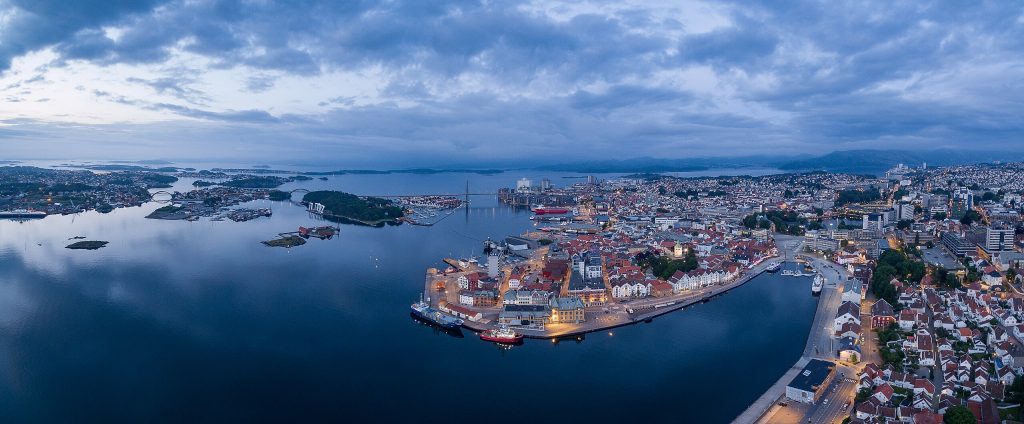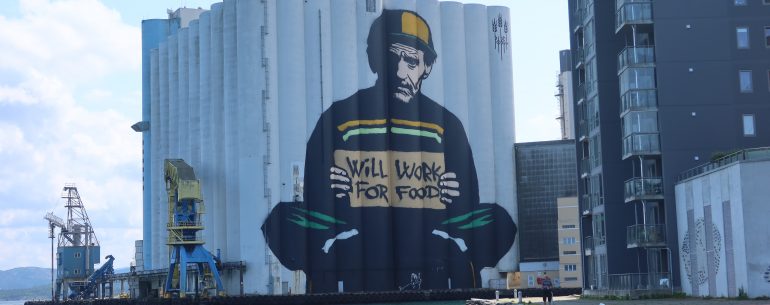After an entertaining evening on the jetty at Flørli, we headed off the next morning to check out Stavanger. The wind, not surprisingly had gone round one hundred and eighty degrees, so we had to motor back down the Lysefjord in grey, misty, murky weather, but the rain mainly just threatened – simply reminding us that it could get us wet if it chose to, but it decided to restrain itself, mainly. Once we turned the corner heading north though, the breeze went behind and we started sailing. The breeze kept increasing so when we headed west across to Stavanger we switch from the genoa to the staysail and managed to sail right up to the bridge by the oil and gas museum. From there it was less than a mile in – a cracking sail.
Once in Stavanger we moored close to Aloucia who had got there before us and started investigating the town. The small guest harbour was very central with good facilities, so we made the most of, washing, shopping and so on to prepare for a change of crew.
Stavanger itself is an attractive town, in parts! The old houses and small shops were well maintained and made for nice walking. The waterfront had a more industrial feel to it, but then this is an oil town essentially, so perhaps not surprising. It is the third largest city in Norway with a population of nearly 150,000 people and it also has one of the lowest rates of unemployment in Norway at around 1.6%. The city is one of the oldest in Norway and was founded around 1125, but its main growth period was from 1969 onwards when it was chosen as the main onshore site for the nascent oil industry. In 1965 the first agreement was signed between Norway and the UK. This set out the method for the sharing of the continental shelf using something called the median line principle. This is a principle underpinned in international law that defines the boundary as a line equidistant from the baselines of the two countries. The presence of Utsire (the westernmost part of Norway) as part of the Norwegian coast helped nudge this boundary slightly further out, to the advantage of the Norwegians!

